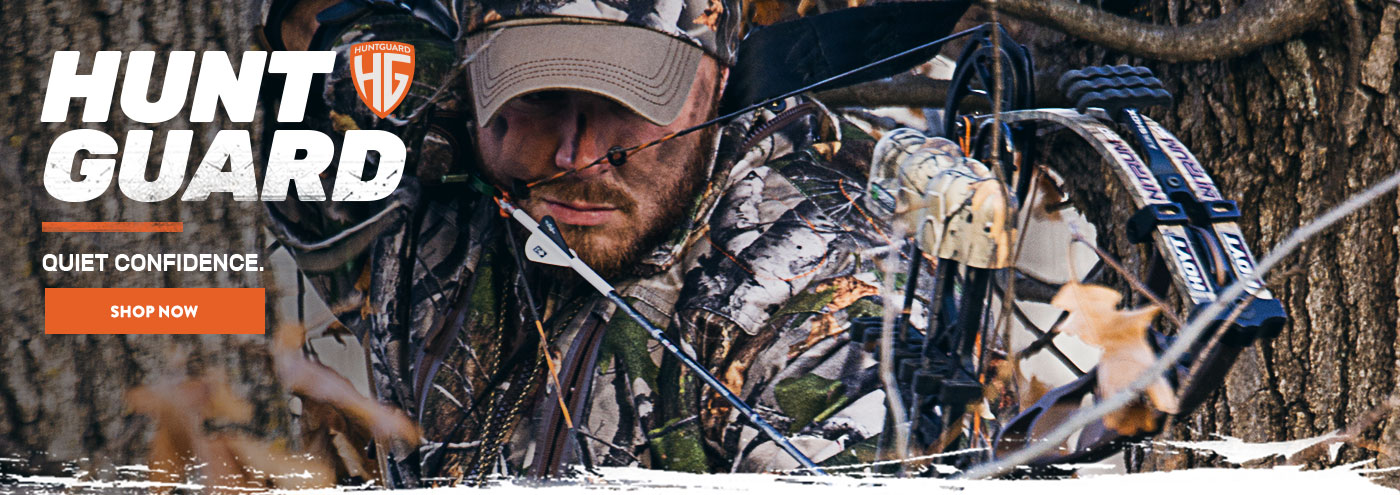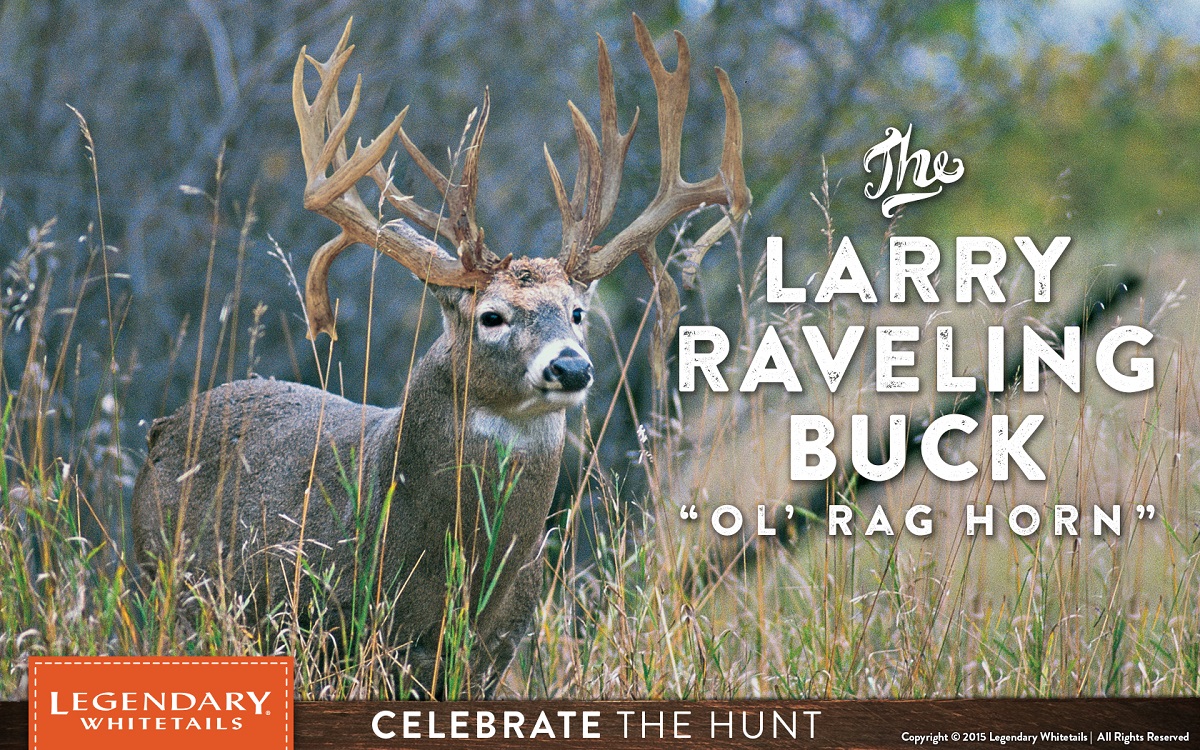Larry Raveling couldn’t believe his eyes. As the monster whitetail buck lumbered toward him, he could see a huge rack. But, why were a pair of white drawers impaled on the points? All the startled hunter could think of was how some poor bowhunter or innocent old lady probably had one heck of a story to tell!
Actually, Larry couldn’t swear that what he saw was somebody’s underwear, but it was white cloth of some kind, and it surely looked like a pair of drawers.
As Larry watched the deer coming his way, he was besieged with a severe case of buck fever and promptly sent a shotgun slug clean over the buck’s back as he passed. The big non-typical disappeared before Larry could fire another shot, but as luck would have it, a forkhorn followed the big one and Larry made a clean kill on his first buck ever. Old “Rag Horn” escaped the drive and wasn’t seen again all season.
This memorable deer drive took place near Petersen, Iowa, in December 1972. Larry was 19 years old, but despite having been raised on a hog farm in prime deer country, he’d never even tried deer hunting before. His appetite now whetted, he often thought of the big non-typical he’d missed. The next year, he planned to spend more time hunting that area the big buck lived.
Because of the small patches of cover, deer drives work very well in Iowa farm country. Other hunting methods were virtually unheard of in that area back then, partly because the short slug season was quite a social event. Friends and family enjoyed getting together for fun, food and the excitement of the deer drives.
As the 1973 season rolled around, Larry heard talk that another local farmer had been seeing a very large buck in his fields. Sure enough, it was near the area where Larry had missed the monster the year before. Most likely, it was the same buck, and Larry and his cousins would be there opening day.
Finally, the first morning of the December season arrived. After the formalities of breakfast and driving the hogs out from under the trucks, the group was off to an intriguing 20-acre patch of timber just across the road from where Larry had missed the big buck the previous season. Larry was a stander on the first drive, and he was hunkered down beside a tree just below the road. As he heard the drivers in the distance, something rustled the leaves off to one side of him and he promptly heard a shot. A buddy shouted, “I got him!”
As it turned out, he just thought he’d gotten him.
Fortunately, a local bowhunter who knew Larry and his friends was driving past and saw the huge non-typical cross the road after the shot. A closer look at the crossing point did turn up a small amount of blood but not enough to trail the buck. Plans were made to drive the timber patch he’d just entered. Beyond it lay the boundary of a state park, and the buck was heading in that direction. Several standers quickly lined up along the boundary just outside the park, while Larry and the other drivers started in from the front side.
After Larry had traveled a few hundred yards, he topped a little rise that had a draw just beyond it. Across that draw stood a deer with its head behind some bushes. Finally, Larry detected antlers and shot.
As Larry approached the fallen buck, he could see an awesome rack. He bent over, counted 29 antler points and said to himself, “Ain’t nobody going to believe this!” The thought actually occurred to him that the buck’s antlers looked even bigger without the linens than they had with them!
Larry’s friends convinced him that his buck was big enough to mount. It was decided that the meat was probably no good, because a “29year-old buck (one year for each point) had to be tough.” But, Larry saved the venison anyway, and it turned out to be fairly tasty. Only later did he learn that the number of points on a rack has absolutely nothing to do with the deer’s age.
Word eventually spread about the monster non-typical, and it was scored by an official Boone and Crockett measurer. It totaled an unbelievable 282 net points, ranking it as the potential No. 2 trophy in the world at that time. But first, it would have to be verified by a panel of B&C measurers, as is customary for all of the top trophies entered in a given three-year Awards Period. To do this, the head had to be shipped to Denver, where B&C’s 1975 judges’ panel was to meet.
As Larry recalled, “A trip to Denver was quite an experience for a ‘corn-field jockey’ like me, who had hardly traveled out of Iowa before.”
His first plane trip found him sitting outside the Denver airport with a huge crate too large to go into a cab. So, Larry had to tear the crate apart right there, give the lumber away and walk through the airport while carrying his mounted buck. Needless to say, he received some strange looks from bystanders.
The Raveling Buck finally made it into the hands of B&C officials, who confirmed him at 282 points and declared him the world’s new No. 2 non-typical. Larry and his wife attended the banquet, at which the hunter was presented the top award for non-typical whitetails during that three-year period.
This magnificent rack is definitely among the finest ever, despite the fact that the buck has a major point broken off at the base of the right brow tine. This missing point has a “mate” on the left antler that is almost 10 inches long. Judging from the corresponding size of the bases of those points, it appears reasonable that the broken tine could have been at least 10 inches long, increasing the score to 292 points or more and setting a new world record. (Jeff Benson’s 286-point deer from Texas, shot in 1892, was then the No. 1 non-typical.)
The Raveling Buck clearly has impressive overall size and great mass. However, his unique combination of features is what makes him one of the greatest non-typicals of all time. First, he has a very typical look, with five long, matching points on each side. The beams are very heavy, as are the points. Drop tines are common on many of the biggest non-typicals, but are seldom as evenly matched as on this buck. The 26 6/8-inch outside spread of the main beams is also exceptional.
I’ve decided I want to be a “corn-field jockey,” too. Anyone who can go from a forkhorn his first year of deer hunting to taking the No. 2 whitetail in the world in his second must know something the rest of us don’t. If Larry ever gets a bigger deer than the Rag Horn Buck, I plan to move to Iowa, plant a corn field and buy 100 hogs.






